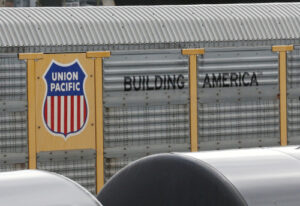By David Shepardson
WASHINGTON (Reuters) -The Federal Aviation Administration failed to act despite dozens of near-miss incidents before a fatal January crash between an American Airlines regional jet and an Army helicopter near Ronald Reagan Washington National Airport, U.S. Transportation Secretary Sean Duffy said on Tuesday.
“The mistake was that this was not unforeseen. We had 84 near misses in the three years before in the D.C. air space, and no one did anything,” Duffy told reporters. “Someone was asleep at the wheel. Someone should have seen that.”
The January 29 crash, which killed 67 people, occurred just days after President Donald Trump took office.
Duffy said it was unclear if the safety data had been elevated to then-Transportation Secretary Pete Buttigieg or the FAA leadership under President Joe Biden.
The National Transportation Safety Board disclosed in March that since 2021 there were 15,200 air separation incidents near Reagan between commercial airplanes and helicopters, including 85 close-call events.
Duffy said the FAA was looking at other recent near-miss incidents and potential hot spots.
“We’ve seen some near misses recently. We’re not ignoring that,” Duffy added, saying the FAA was considering “what moves do we have to take to make sure it doesn’t happen again.”
Lawmakers from both parties have questioned why the FAA failed to act for years to address close calls involving helicopters near Reagan.
“Clearly, something was missed,” FAA Deputy Administrator Chris Rocheleau told senators in March.
The FAA in early May barred the Army from helicopter flights around the Pentagon after a May 1 close call that forced two civilian planes to abort landings.
The NTSB is holding a three-day investigative hearing into the January crash starting on Wednesday. The NTSB will review the Army helicopter air data systems and altimeters as well as FAA oversight of Washington airspace.
On Tuesday, Senator Ted Cruz and several other Republican senators unveiled legislation to require the use of ADS-B, an advanced aircraft-tracking technology, by military helicopters near civilian planes and the use of ADS-B for all civilian aircraft. The accident helicopter was not using ADS-B at the time of the January collision.
(Reporting by David Shepardson; Editing by Chizu Nomiyama and Leslie Adler)




